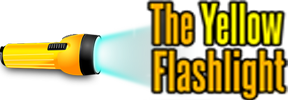AI agents can read CRM records and auto draft creative briefs, estimates, and timelines so teams spend less time on paperwork and more on design. This guide walks through practical prompts, estimation approaches, and integration steps to make proposal automation reliable and client ready.
Mapping CRM Data to Proposal Structure for proposal automation

AI agents can translate CRM fields into proposal sections automatically.
A 2025 trend report shows about 85% of enterprises plan to adopt agentic tools.
Begin by pairing CRM contact fields with a standard proposal outline.
This small map removes repeated copy-paste and cut errors.
Use simple rules to populate scope, milestones, and pricing. That jumpstarts proposal automation without heavy setup.
Next, build checks that validate data quality. Clean data keeps timelines realistic.
When you apply AI agents for design, they can suggest deliverables from historical projects.
Keep the system adaptable. Different clients need different portfolio highlights.
Map CRM tags to creative assets and review notes.
Good mapping tightens handoffs and improves sales handshakes within CRM workflows.
- Link proposal sections to CRM fields.
- Auto-fill estimates from past projects.
- Push timeline drafts into calendars.
These steps let AI agents for design draft clearer scopes.
They also make CRM workflows smoother, reducing back-and-forth.
Finally, real examples and templates appear in our write-up on practical AI agent workflows.
Auto Drafting Creative Briefs for proposal automation
graphic design teams often let client notes sit in CRMs. A smart auto draft fills that gap. proposal automation pulls contact fields into a brief. It creates a clear scope sentence and a primary goal. AI agents for design read history and suggest deliverables. A second pass refines tone and success metrics. CRM workflows route the draft to the right lead. proposal automation also seeds preferred channels and asset sizes. A human edits priorities and approval steps.
CRM workflows
When live, CRM workflows update stages and trigger reminders automatically. That keeps timelines honest and approvals timely. About 60% of new enterprise AI deployments used agentic features in 2025. AI agents for design can draft estimates from past projects. proposal automation populates line items with historical rates. Designers keep control of visuals and edits. The brief can reference visual identity notes and sample logos sketches. AI agents for design recommend which design tools to use. Teams can link to examples from client files. proposal automation sends the draft back into the CRM for approval. For a deeper setup, see how to automate client onboarding. AI agents for design then finalize a neat timeline.
Estimating Costs Timelines with AI agents for design

Estimating budgets can feel fuzzy for new graphic design teams.
We rely on AI agents for design to auto draft quick cost outlines.
Those outlines slot into proposal automation so quotes look consistent.
CRM workflows that keep timelines realistic
Linking a draft to the pipeline reduces manual handoffs in CRM workflows.
Start small: agents can create a minimum viable estimate in days.
Many pilots begin around $5k–10k with 6–8 day MVPs, a recent guide shows.
Next, agents refine scope from files and a client brief.
That feeds back into proposal automation for faster revisions.
Use a checklist to map tasks into your CRM workflows and owners.
Examples of agent steps and triggers appear in practical writeups like use cases of AI agent workflows.
Agents also read visual identity notes alongside asset lists.
They keep the creative process aligned with budget limits.
Agents estimate hours for digital artwork and export sizes.
They break down time for logos and related deliverables.
The result improves your branding strategy and clarity for clients.
Finally, set render queues in design tools and generate variants like photo booth templates automatically.
As you scale, more proposal automation will shave days off every offer.
Embedding Agents into CRM workflows for proposal automation
Auto-drafting briefs, estimates, and timelines becomes simple when systems read meeting notes. Teams save hours with structured outputs. This is the start of smarter proposal automation for studios.
Streamlining CRM workflows
With AI agents the CRM auto-fills lead details, creates tasks, and nudges stakeholders. By 2025, 85% of enterprises plan to adopt AI agents, boosting adoption into everyday tools. These agents generate an initial scope, then refine cost and schedule lines. That feeds directly into proposal automation pipelines.
For the creative process, agents summarize client intents and suggest milestones. Teams using graphic design workflows see fewer back-and-forths. The same systems tag assets for branding strategy and sync design tools. They also catalog digital artwork and keep visual identity notes linked to proposals.
- Faster estimates and clearer timelines in the CRM.
- Auto-created asset lists, including logos and photo booth templates.
Want examples of real workflows and use cases? See practical use cases of AI agent workflows that mirror this setup. Second-phase checks keep CRM workflows consistent and client-ready.
Final words
AI driven proposal automation reduces manual drafting, improves estimate accuracy, and shortens sales cycles when paired with clear CRM mapping and review rules. Start with small pilots, measure first pass accuracy and approval velocity, then expand across teams. Good governance and human oversight keep creative judgment intact while scaling efficiency.
